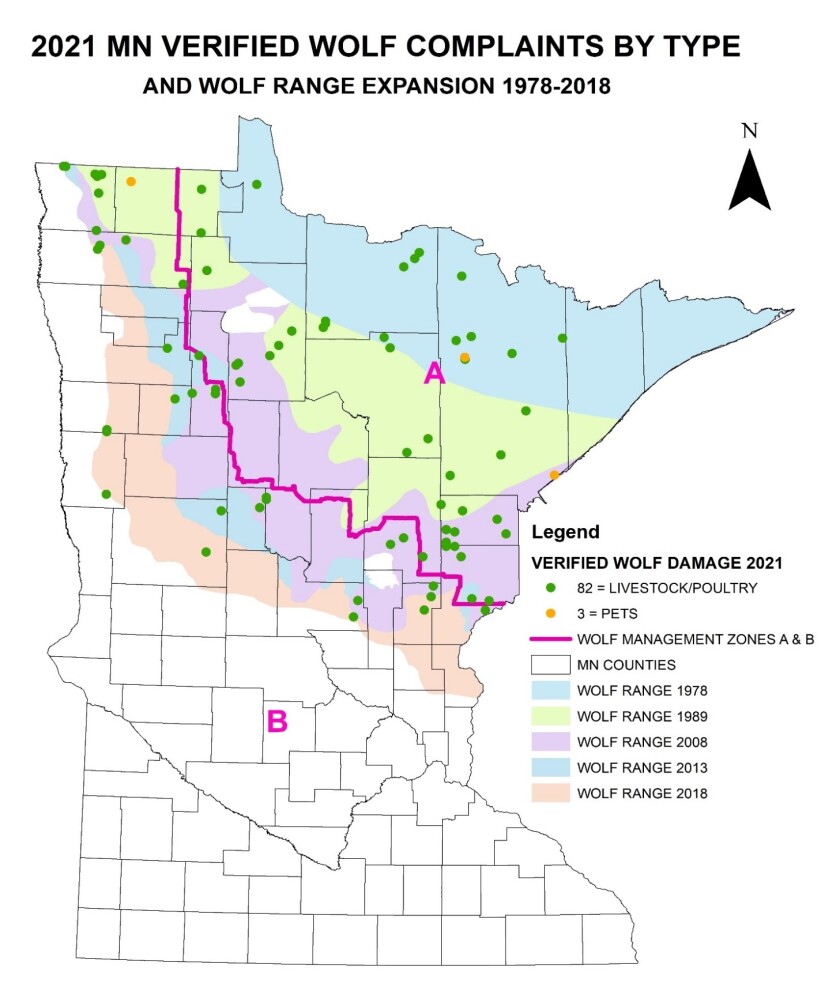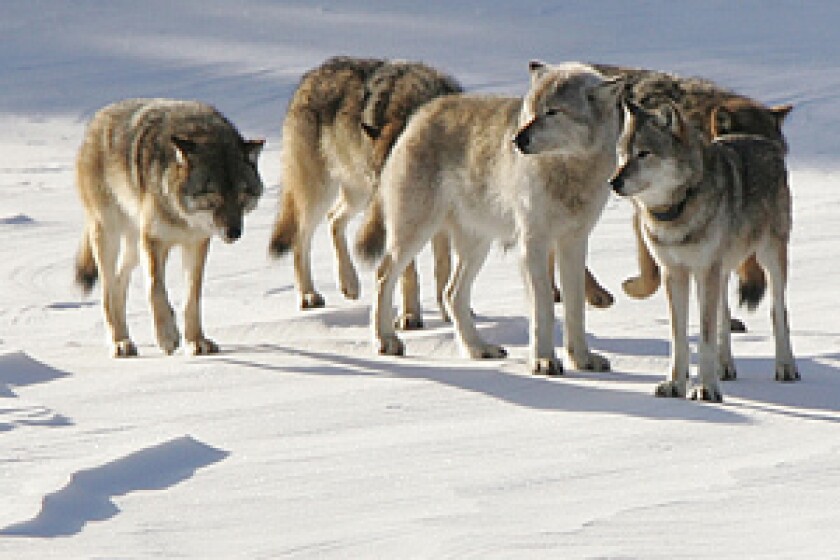DULUTH — A U.S. government program that captures and kills wolves near where livestock have been killed in Minnesota is back in business after a pause caused by a recent federal court decision.
A federal judge in California ruled on Feb. 10 that wolves across most of the U.S. have regained protections under the federal Endangered Species Act, including in Minnesota, Wisconsin and Michigan.
ADVERTISEMENT
That decision temporarily put the brakes on all wolf trapping in Minnesota, both for research purposes and for the federal depredation program. Wolves had been under state and tribal management since January 2021, when the Trump administration removed federal protections for the big canines.
The judge’s move at first made it unclear whether the U.S. Department of Agriculture's Wildlife Services program could resume taking wolves on or near farms where verified livestock attacks have occurred. That program on average kills about 185 Minnesota wolves each year, out of the state’s estimated population of 2,700 wolves, by far the most of any state outside Alaska.
“We did have a temporary lapse in authority to take depredating wolves,” said John Hart, the wildlife biologist who heads the Grand Rapids-based wolf trapping program in Minnesota for the USDA.
But Hart said the agency has regained authority to kill wolves under Endangered Species Act regulations that were in effect from December 2014 through January 2021, when wolves in Minnesota were classified as “threatened” rather than endangered. It appears wolves in Minnesota will be considered threatened again going forward. That status allows the trapping to occur in Minnesota while no lethal control is allowed in Wisconsin or Michigan where wolves are officially endangered.

The judge's decision made it once again illegal under federal law for any unauthorized person to kill or harm a wolf in Minnesota. Only federally authorized trappers can kill wolves at depredation sites and only permitted government, research or tribal agencies are allowed to trap wolves for research.
Minnesota has not held a state hunting or trapping season since 2014 and, after the judge’s ruling, will be unable to do so going forward.
Fewer wolf complaints, fewer wolves killed in 2021
The federal depredation program in Minnesota can kill wolves if wolf damage is verified and there is potential for further losses. In 2021 the program received 187 calls for wolf damage assistance from livestock, poultry, pet owners or citizens concerned about public safety. A total of 86 of the 187 requests for assistance were verified as wolf-killed or injured domestic animals or public safety concerns.
ADVERTISEMENT
The program conducts some non-lethal measures to discourage wolves but did kill 152 wolves at 76 sites in 2021. That’s down from an average of 185 wolves killed each year over the last 9 years and correlates with a 21% decrease in complaints from farmers and pet owners, according to the program’s annual report.

The decline also correlates with the amount of state taxpayer money paid out to farmers who lose livestock due to wolf attacks. In 2021 the Minnesota Department of Agriculture paid farmers $122,025 for 89 verified attacks. That’s less than half the $253,313 paid out in 2016 for 137 verified attacks, the peak year.
Some research trapping resumes
In addition to the federal depredation trapping, the Minnesota Department of Natural Resources also paused its research wolf trapping after the Feb. 10 court decision but also has since resumed its efforts.
“We had a little delay in figuring out if the rules were in place that allows us to trap for research, but that’s been resolved now,” said Dan Stark, large carnivore specialist for the Minnesota DNR.
Stark said DNR biologists are trapping wolves and fitting them with radio transmitter collars as part of their effort to update wolf population estimates.
Mike Schrage, wildlife biologist for the Fond du Lac Band of Lake Superior Chippewa, said he will be able to resume trapping and collaring again on the reservation as an agent of the state DNR. The band is researching wolf current populations, which feeds into the DNR’s statewide estimate, as well as causes of wolf mortality, the impact of the Line 3 pipeline construction across wolf habitat and wolf pup survival rates.
John Myers reports on the outdoors, environment and natural resources for the Duluth News Tribune. He can be reached at jmyers@duluthnews.com.









